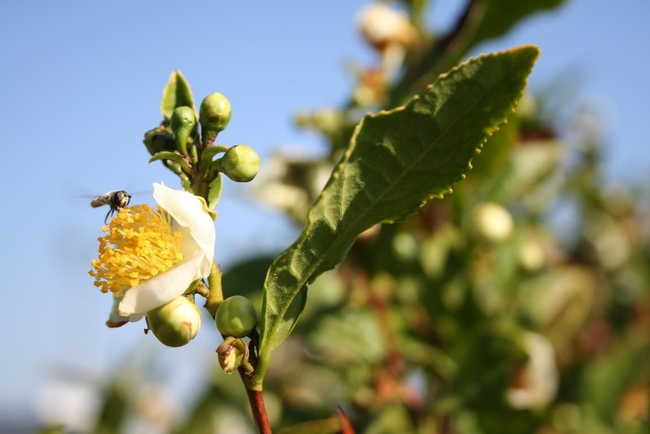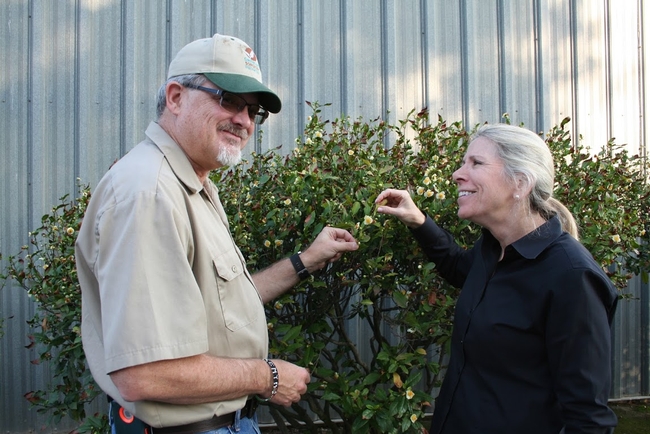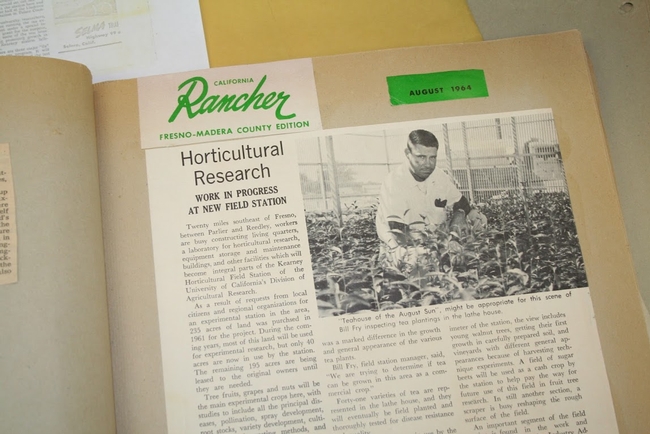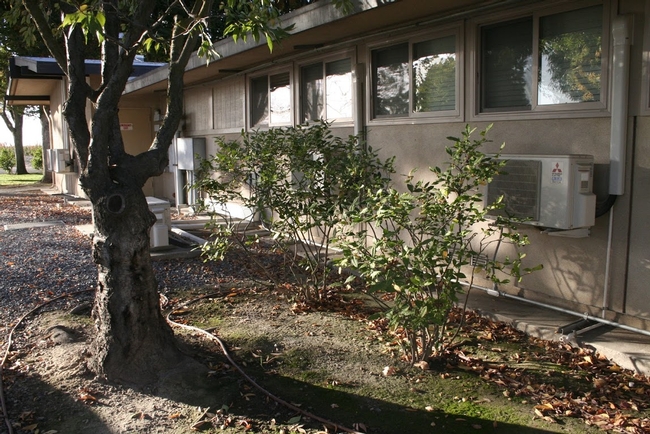Fifty-five years ago, Thomas J. Lipton Inc. funded a tea study at the UC Kearney Agricultural Research and Extension Center in Parlier, which is piquing the interest of scientists today. For 18 years, researchers pampered and coaxed 41 tea clones to determine whether tea plantations could be a lucrative alternative for San Joaquin Valley farmers.
Scientists of the time predicted a potential $25,000 economic value of future California tea plantings. Today, tea is a $3.8 billion business in the U.S. and UC Davis recently launched a Global Tea Initiative. Kearney submitted its yellowed research reports, correspondence and newspaper clippings about the long-ago tea research to the initiative's collection of research, teaching and outreach spanning agriculture, social sciences, health, culture and economics of all things tea.
That got the attention of UC Davis chemistry professor Jacquelyn Gervay-Hague, who is studying microbes in the soil where tea is grown and their potential impact on the health attributes of tea.
“I believe there is a microbial exchange that ends up in the cup,” she said.
When the Kearney tea research program was scrapped in 1981, a prescient researcher had a handful of the best tea clones planted in the landscape around buildings at Kearney, where they stand today as fall-blooming non-descript shrubs.
Hague, who with her students frequently travels overseas to sample soil on tea plantations, learned of the plants at Kearney and recognized the opportunity to conduct studies in California.
“It's really remarkable,” she said.
Kearney director Jeff Dahlberg believes the renewed interest in the center's tea, growing awareness about the healthful properties of tea, and increasing enthusiasm for artisanal tea and locally grown food could turn tea into a lucrative specialty crop for small-scale San Joaquin Valley farmers.
“This may be something like blueberries,” he said. “Twenty years ago, people thought they couldn't be grown in California. But with research conducted here at Kearney, there is now a thriving blueberry industry in the San Joaquin Valley and on the coast.”
It was the same intention that prompted Dahlberg's predecessors to support the tea studies in the 1960s and 70s.
At that time, 41 clones were propagated in a lathe house at Kearney, and later planted in a half-acre field plot. In 1967, UC Cooperative Extension agronomy researcher Karl H. Ingebretsen told a newspaper reporter that the plants came from clones that survived a similar USDA trial in the 1880s.
“Most of the imported plants were taken from some growing in South Carolina, where the Lipton company found them 10 years ago growing wild,” Ingebretsen said in 1967.
The Kearney superintendent at that time, Frank Coddington, said the scientists hoped successful experimentation would lead to varieties of tea suitable for mechanical harvest and the production of instant tea, a product that in those days was becoming more and more popular.
The tea clones at Kearney grew well and appeared healthy, the reports said. Tea plants tolerated California's dry climate and stood the heat when irrigated properly. Five of the 41 clones were reported to show “real promise,” but when the tea project was terminated in 1981, only a few plants representing two of the clones were saved as landscape shrubs. Nine plants now grow on the west side of a corrugated tin warehouse, and four in the shade of knobby flowering pear trees just south of the original building at the site.
Gervay-Hague plans to build on the results from early Kearney research with 21st Century agricultural production tools.
“I won't repeat the work done in the 60s, but they didn't know about the microbiome or genetics back then,” she said. “UC Davis has 3D imaging capability, which I want to use to watch the plants change. I would like to do DNA testing.”
The UC Davis chemist is applying for grants to build a repository of plants that may become the foundation of commercial tea gardens in California.
This story en español.



